SCIENCE REPORTER SUMMARY: JANUARY 2025
ARTICLE 1
- ARTICLE 1
- Robotics and Al Reshape Weed Management
- The Historical Battle Against Weeds
- The Rising Threat of Herbicide Resistance
- AI and Robotics Transform Weed Control
- How Laser Weeders Work
- Training the Laser Weeder
- Advantages of Laser Weeding
- Challenges of Laser Weeding
- The Future of Weed Management
- ARTICLE 2
- Quantum gravity may pave the way towards the unification of the basic forces of nature
- Newton’s Law of Universal Gravitation
- The Need for Quantum Gravity
- Unifying the Fundamental Forces
- The Role of Elementary Particles in Force Mediation
- Discovery of Gravitational Waves and Quantum Implications
- Recent Advances in Quantum Gravity Research
- Implications for the Grand Unified Theory
- Towards a Unified Theory of Physics
- ARTICLE 3
- IIT Madras & US researchers study impact of oral contraceptives on blood pressure
- Study on Oral Contraceptives and Blood Pressure Response During Exercise
- Key Findings on Oral Contraceptives and Blood Pressure
- Publication and Expert Insights
- Implications for Menopausal and Aging Women
- Exercise and Hormonal Influence on Blood Pressure
- Sex Differences in Cardiovascular Response to Exercise
- Conclusion and Future Research Directions
- ARTICLE 4
- A Sneak Peek into Science and Technology Breakthroughs in 2024
- A Journey Through Our Universe — Space and Astronomy
- ISRO’s PSLV-C59 Successfully Deploys ESA’s Satellites
- World’s First Single-Piece 3D-Printed Engine
- Lignosat – The World’s First Wooden Satellite
- TIDYE-1b – The Youngest Transiting Planet Ever Discovered
- First-Ever Image of a Black Hole Corona
- TOI 6651b – A Massive Exoplanet with Unique Properties
- Water Molecules Detected on an Asteroid for the First Time
- Record-Breaking Black Hole Plasma Jets
- Marvels of the Natural World — Environment and Ecology
- Largest Coral in the World Discovered in the South Pacific
- World’s Oldest Bird Lays an Egg at 74
- First-Ever Study of a Saber-Toothed Kitten
- Two Cicada Broods Emerge Together for the First Time in 221 Years
- Revolutionary Approach to Rhino Conservation
- Advancing Research in Healthcare and Medical Sciences
- IIT Madras Unveils the Most Detailed 3D High-Resolution Images of the Human Fetal Brain
- Breakthrough in Stem Cell Therapy for Vision Restoration
- First-Ever Genetically Edited Pig Kidney Transplant in a Living Person
- Delving into the Fascinating World of Matter and Energy
- The World’s First Nuclear Clock: A Leap in Precision
- Breakthrough in Laser-Cooled Positronium at CERN
- Discovery of the First Unconventional Superconductor Found in Nature
- Technological Advancements Reshaping the World
- Breakthrough in Quantum Cryptography
- Revolutionary Brain Manipulation Technology
- DNA-Based Computing and Data Storage
- ARTICLE 5:
- COP29 Stepped Forward Yet Much More Needed
- COP29: A Landmark Climate Summit in Baku, Azerbaijan
- Historic Increase in Climate Finance
- Challenges in Credibility and Commitment
- Key Agreements and Breakthroughs
- 1. Loss and Damage Fund Operationalization
- 2. Carbon Market Rules Finalized
- 3. Strengthening Mitigation Efforts
- Noteworthy Climate Commitments
- 1. Global Methane Reduction Initiative
- 2. Water Resilience Declaration
- 3. Transparency and Accountability in Climate Reporting
- 4. Gender and Youth Inclusion in Climate Action
- Global Climate Action & Future Pathways
- Looking Ahead to COP30
- ARTICLE 6:
- Purity in Peril: Impact of Food Adulteration on Public Health
- The Rising Threat of Food Adulteration
- Causes of Food Adulteration
- Health Risks and Economic Consequences
- Nutritional Deficiency and Digestive Disorders
- Long-Term Health Risks and Toxicity
- The Need for Stricter Regulations and Consumer Awareness
- A Collective Responsibility
- ARTICLE 7:
- Strange Hunting Behaviour in Birds
- The Need for Food in the Animal Kingdom
- Aberrant Hunters in the Avian World
- Honey Buzzard – The Insectivore Raptor
- Cape Gannet – The Avian Missile
- African Black Heron – The Canopy Hunter
- Shrikes – The Serial Killers of the Avian World
- Puffins – The Parrots of the Sea
- Indian Skimmer – The Scissor Bird
- Pelicans – Masters of Cooperative Hunting
- The Role of Birds in Nature and Conservation Efforts
- ARTICLE 8:
- Unveiling the Truth: Debunking Common Animal Misconceptions
- ARTICLE 9
- Handfish: Giving underwater high fives to one of the quirkiest fishes
- A Unique Marine Species
- Physical Characteristics and Adaptations
- Hunting and Survival Strategies
- Threats to Handfish Survival
- Conservation Efforts and Future Protection
- A Reminder of Marine Biodiversity
- NEWS IN BRIEF
- 1) MobilePoser — A New System to Capture Full-body Motion
- 2) Smart Agriculture Sensor to Monitor Plants
- 3) Researchers develop recyclable and fully ocean-degradable plastic
- Robotics and Al Reshape Weed Management
Robotics and Al Reshape Weed Management
The Historical Battle Against Weeds
- Weeds have been a persistent challenge for cultivators throughout history. Over 15,000 years ago, early humans foraged for grains and fruits in the wild, competing with weedy growth.
- As agriculture evolved, weeds naturally accompanied crops, vying for essential resources such as nutrients, water, and sunlight.
- Early farmers relied on labor-intensive hand weeding before transitioning to mechanical tools for efficiency.
- A major breakthrough came in the 1940s with the introduction of target-specific herbicides, which selectively eliminated weeds while reducing manual labor and increasing crop yields.
- However, by the 2010s, weeds had developed resistance to these chemicals, presenting a significant challenge to modern agriculture.
The Rising Threat of Herbicide Resistance
- The issue of herbicide-resistant weeds has escalated, with the International Herbicide-Resistant Weed Database documenting 521 unique cases of resistance worldwide.
- These resistant weeds span 23 of the 26 known herbicide action sites, affecting 164 different herbicides.
- This resistance has forced farmers to rely on complex combinations of herbicides and genetically modified herbicide-resistant crops, creating a chaotic weed control scenario.
- The increasing failure of chemical solutions has driven the search for alternative, sustainable weed management methods.
AI and Robotics Transform Weed Control
- Recent advancements in artificial intelligence, robotics, and laser technology have led to the development of laser weeders—an innovative and sustainable alternative to traditional herbicide-based methods.
- These high-tech machines are equipped with sensors and cameras that meticulously scan fields to detect weeds.
- Once identified, a laser precisely targets and destroys the weed while leaving the surrounding crops unharmed.
- This method operates at impressive speeds and has the potential to revolutionize sustainable agriculture.
How Laser Weeders Work
A modern laser weeder comprises four main components:
- High-Resolution Camera – Captures real-time images of the field.
- Deep Learning System (DLS) – Analyzes images to differentiate between crops and weeds.
- Robotic Actuator with a Laser Gun – Targets and eliminates identified weeds.
- Autonomous or Tractor-Hitched System – Operates independently or is powered by a tractor.
- The process begins with the camera capturing field images, which are analyzed by the DLS.
- This system, trained to recognize specific crop-weed environments, commands the robotic actuator to aim and fire the laser precisely at the weeds.
- Some laser weeders are tractor-powered, while others operate as autonomous vehicles using GPS, LIDAR, and computer vision for navigation.
Training the Laser Weeder
Before deployment, a laser weeder undergoes rigorous training to recognize the weeds it must eliminate. The training process consists of three key stages:
- Training – The model learns to distinguish weeds from crops using a labeled dataset of images.
- Validation – The system is tested with new images to refine its accuracy and prevent errors like overfitting or underfitting.
- Testing – The laser weeder is deployed in real farm conditions to assess efficiency, accuracy, and potential improvements.
Post-2020, laser weeders have gained traction, particularly in large-scale North American farms, where industrial laser weeding systems with multiple high-precision carbon dioxide lasers have emerged.
Advantages of Laser Weeding
Laser weeding offers several benefits over traditional methods:
- Permanent Weed Control – A single laser weeder can be trained for multiple crop-weed ecosystems, unlike herbicides that require continuous investment to counter weed resistance.
- Precision and Environmental Friendliness – Laser weeders selectively eliminate weeds without affecting surrounding crops, avoiding soil and water contamination.
- Prevention of Weed Regrowth – Unlike mechanical weeding, which can stimulate new weed growth, laser weeders prevent further weed proliferation.
- Multifunctionality – These systems can also perform thinning, an agronomic practice that removes excess plants to improve crop health.
Challenges of Laser Weeding
Despite its advantages, laser weeding has certain limitations:
- High Initial Investment – Laser weeders are expensive and require regular maintenance.
- Safety Concerns – Laser reflections can be hazardous to humans and animals, necessitating strict safety protocols.
- Limited Capacity for Dense Weeds – Laser weeders struggle with areas of high weed density or large weed sizes.
- Limited Commercial Availability – The technology is still in its early stages, with limited accessibility and high costs.
The Future of Weed Management
- Laser weeding represents a promising shift toward sustainable and eco-friendly agriculture.
- It aligns with global efforts such as the United Nations’ Sustainable Development Goals.
- While adoption is still in its early stages, the numerous benefits suggest that laser weeders will play a crucial role in future farming.
- As the technology matures, increased accessibility and efficiency improvements could make laser weeding a mainstream weed control solution, paving the way for a more sustainable agricultural future.
ARTICLE 2
Quantum gravity may pave the way towards the unification of the basic forces of nature
Newton’s Law of Universal Gravitation
- Newton’s law of universal gravitation describes how every particle in the universe attracts every other particle with a force that is proportional to their masses and inversely proportional to the square of the distance between them.
- This fundamental law applies not only to objects on Earth but also to celestial bodies, making it a universal principle of classical physics.
- While Newton’s law successfully explains most gravitational phenomena, it has limitations when dealing with extreme conditions, such as black holes and subatomic particles.
The Need for Quantum Gravity
- Albert Einstein’s General Theory of Relativity (GTR) refined Newton’s classical theory by explaining gravity as the curvature of spacetime caused by mass.
- However, GTR, like Newtonian gravity, fails to describe gravitational interactions at extremely small scales, where the principles of quantum mechanics become necessary.
- This gap in understanding has led to the development of quantum gravity, a theoretical framework that seeks to integrate gravity into the quantum world and provide a more complete description of the universe’s fundamental forces.
Unifying the Fundamental Forces
- The universe is governed by four fundamental forces: electromagnetism, the weak nuclear force, the strong nuclear force, and gravity.
- The Standard Model of particle physics successfully unifies the first three forces, but gravity remains an outlier.
- Scientists believe that a quantum theory of gravity is essential to achieving a Grand Unified Theory (GUT) that explains all forces in nature within a single framework.
The Role of Elementary Particles in Force Mediation
- Fundamental forces operate through the exchange of elementary particles.
- For example, photons mediate the electromagnetic force, gluons mediate the strong nuclear force, and W and Z bosons mediate the weak nuclear force.
- Scientists hypothesize that gravity is mediated by hypothetical particles called gravitons.
- The detection of these gravitons would provide crucial evidence for the quantum nature of gravity and help bridge the gap between classical and quantum physics.
Discovery of Gravitational Waves and Quantum Implications
- In 2016, the Laser Interferometer Gravitational-Wave Observatory (LIGO) confirmed the existence of gravitational waves—ripples in spacetime caused by massive cosmic events.
- Physicists argue that if gravitational waves exist, then gravitons must also exist.
- Further research suggests that treating the gravitational field quantum mechanically induces fluctuations, or noise, in LIGO’s interferometer.
- Detecting this noise could serve as direct evidence of the quantization of gravity and confirm the existence of gravitons.
Recent Advances in Quantum Gravity Research
- Soham Sen and Sunandan Gangopadhyay from SN Bose National Institute for Basic Sciences, Kolkata, have made significant progress in detecting signatures of quantum gravity in terrestrial systems.
- Their research, published in The European Physical Journal C, marks a crucial step toward unifying classical and quantum gravity.
- They studied freely falling particles in a quantum gravitational field and discovered an uncertainty relation between position and momentum, induced by graviton noise.
Implications for the Grand Unified Theory
- The researchers’ findings align with Werner Heisenberg’s uncertainty principle, which states that the position and momentum of a particle cannot be simultaneously measured with absolute precision.
- Their calculations demonstrate a direct coupling between classical gravity and the quantized gravitational field, reinforcing the quantum nature of gravity.
- Gangopadhyay emphasizes that their derivation of the generalized uncertainty principle is a robust step in proving quantum gravity’s role in fundamental physics.
Towards a Unified Theory of Physics
- Sen and Gangopadhyay’s work is expected to contribute significantly to the unification of gravity with the other three fundamental forces.
- If successful, this research could lead to the long-sought Grand Unified Theory (GUT), providing a complete and coherent understanding of the fundamental forces that govern the universe.
- Their findings bring scientists closer to solving one of the greatest mysteries in physics—the reconciliation of quantum mechanics and gravity.
ARTICLE 3
IIT Madras & US researchers study impact of oral contraceptives on blood pressure
Study on Oral Contraceptives and Blood Pressure Response During Exercise
- Researchers from the Indian Institute of Technology Madras (IIT Madras) and the University of Minnesota, US, are investigating how oral contraceptives impact blood pressure in women engaged in dynamic exercises like cycling or running.
- While oral contraceptives are known to increase resting blood pressure, their effect on exercise-induced blood pressure changes is not well understood.
- Additionally, the role of hormonal fluctuations during the menstrual cycle in influencing blood pressure remains unclear.
Key Findings on Oral Contraceptives and Blood Pressure
- The study focused on young women aged 20-25 years and examined how oral contraceptives and natural ovarian hormone fluctuations (such as estrogens) affect blood pressure during lower-body exercise.
- The researchers found that neither oral contraceptive use nor natural hormonal variations significantly influenced blood pressure responses when engaging in lower-body exercises.
- This suggests that oral contraceptives do not lead to exaggerated blood pressure responses, even though they are linked to increased resting blood pressure.
Publication and Expert Insights
- The findings were published in the American Journal of Physiology-Regulatory, Integrative and Comparative Physiology, a well-regarded peer-reviewed journal.
- Experts at IIT Madras, highlighted the significance of this study, emphasizing that oral contraceptives are widely used by women for birth control, acne reduction, menstrual pain relief, and ovarian cyst prevention.
- Given that around 70% of female athletes reportedly use oral contraceptives at some point, understanding their effects on exercise-related blood pressure responses is crucial.
Implications for Menopausal and Aging Women
- Experts at the University of Minnesota, noted that there is limited information on how the exercise pressor response (EPR)—the increase in blood pressure during exercise—varies in women over their lifespan.
- They pointed out that menopause, which typically occurs around age 50, increases cardiovascular risk.
- Future research will aim to determine whether EPR contributes to this heightened risk in postmenopausal women.
Exercise and Hormonal Influence on Blood Pressure
- Exercise naturally increases blood pressure due to heightened nerve activity and changes in nitric oxide availability.
- The researchers hypothesized that during the ovulation phase—when estradiol levels peak—women would experience the lowest EPR compared to other menstrual phases or oral contraceptive use, which leads to consistently low estradiol levels.
- However, their findings demonstrated that menstrual cycle phases and oral contraceptive use did not significantly alter EPR, suggesting that oral contraceptives do not increase exercise-induced blood pressure responses beyond normal levels.
Sex Differences in Cardiovascular Response to Exercise
- Past research has shown sex-based differences in cardiovascular responses to exercise, often influenced by hormone levels.
- Some studies indicate that oral contraceptives may exaggerate blood pressure responses in upper-body exercises.
- However, the current study found no such effect during lower-extremity dynamic exercises, reinforcing that neither natural ovarian hormones nor oral contraceptive use significantly modulates blood pressure responses in young, healthy females.
Conclusion and Future Research Directions
- This research provides valuable insights into how oral contraceptives influence blood pressure during exercise, particularly in young women.
- The findings suggest that oral contraceptives do not exacerbate blood pressure responses in lower-body exercises.
- Future studies will explore how these effects change across different age groups, particularly in menopausal women, to better understand the broader implications of oral contraceptive use on long-term cardiovascular health.
ARTICLE 4
A Sneak Peek into Science and Technology Breakthroughs in 2024
A Journey Through Our Universe — Space and Astronomy
ISRO’s PSLV-C59 Successfully Deploys ESA’s Satellites

- On December 5, 2024, the Indian Space Research Organisation (ISRO) successfully launched the European Space Agency’s (ESA) PROBA-3 satellites aboard PSLV-C59 from the Satish Dhawan Space Centre in Sriharikota, India.
- This mission showcased the collaboration between ISRO, New Space India Ltd (NSIL), and ESA. PROBA-3 is an in-orbit demonstration mission designed to test precise formation flying in space.
- It consists of two spacecraft, the Coronagraph Spacecraft (CSC) and the Occulter Spacecraft (OSC), marking a major milestone in space technology.
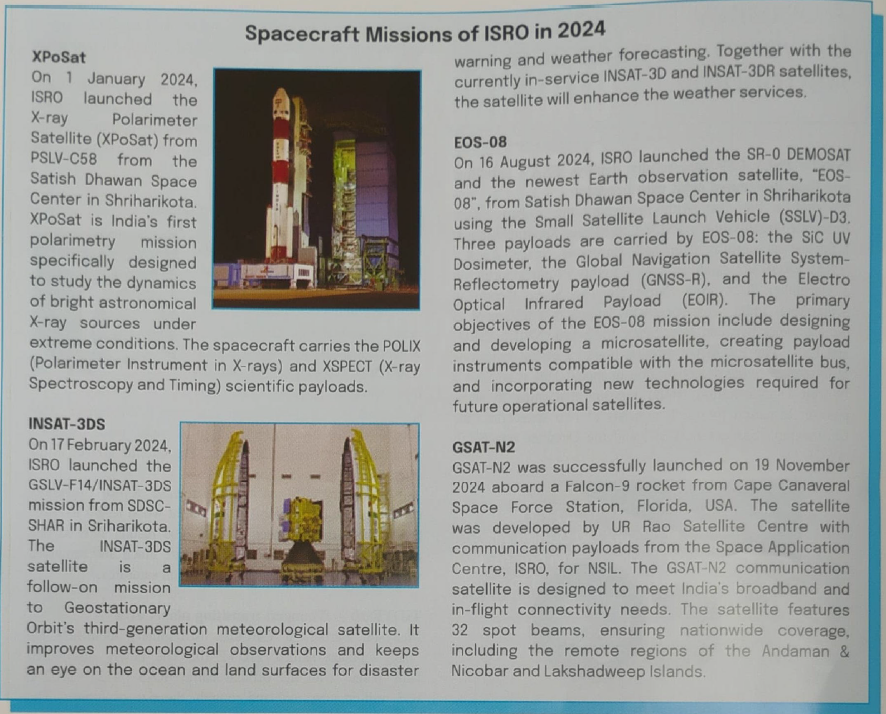
World’s First Single-Piece 3D-Printed Engine

- Agnikul Cosmos, an IIT Madras-incubated startup, successfully launched India’s first semi-cryogenic engine, named Dhanush, at the Satish Dhawan Space Centre.
- It is also the world’s first single-piece 3D-printed engine. ISRO provided technical support, furthering India’s progress in space technology.
- The mission primarily served as a test flight to validate homegrown technologies and collect critical flight data for Agnikul’s upcoming orbital launch vehicle, Agnibaan.
Lignosat – The World’s First Wooden Satellite
- On November 5, 2024, Japan launched Lignosat, the world’s first wooden satellite, from NASA’s Kennedy Space Center aboard a SpaceX Dragon cargo capsule.

- Developed by Kyoto University researchers, the satellite aims to promote sustainability in space technology and reduce environmental pollution.
- Tests conducted at the International Space Station confirmed the durability and stability of special wood materials, making wooden satellites a viable alternative to conventional ones.
TIDYE-1b – The Youngest Transiting Planet Ever Discovered

- Carolina astronomer Madyson Barber discovered TIDYE-1b, a newly identified planet around the young star IRAS 04125+2902 b.
- Observing such young planets is typically difficult due to thick protoplanetary disks.
- However, in the case of TIDYE-1b, the star’s misaligned disk allowed astronomers to study it.
- The reason behind this misalignment remains unknown, presenting a mystery for further research.
First-Ever Image of a Black Hole Corona

- Using data from NASA’s Imaging X-ray Polarimetry Explorer (IXPE), scientists have, for the first time, mapped the shape of a black hole’s corona—a region of hot plasma surrounding black holes.
- Previously, this structure was only understood theoretically.
- The findings, published in The Astrophysical Journal, provide key insights into how black holes sustain and grow by interacting with their surrounding plasma.
TOI 6651b – A Massive Exoplanet with Unique Properties
- Researchers from the Physical Research Laboratory in Ahmedabad used the PARAS-2 spectrograph to discover TOI 6651b, an exoplanet 60 times the mass of Earth.
- Orbiting a Sun-like star, it completes one orbit in just five days and has a density of 2.5 g/cc.
- These characteristics challenge existing planetary formation theories and have prompted scientists to rethink their understanding of exoplanetary systems.
- The discovery was published in Astronomy and Astrophysics.
Water Molecules Detected on an Asteroid for the First Time

- Scientists from the Southwest Research Institute (SwRI) used data from NASA’s retired SOFIA observatory to detect water molecules on an asteroid for the first time.
- Their research, published in The Planetary Science Journal, examined four silicate-rich asteroids, detecting water on two of them.
- This discovery provides valuable insight into how water may have been distributed across the solar system and possibly delivered to Earth.
Record-Breaking Black Hole Plasma Jets
- A team of international astronomers using the Giant Metrewave Radio Telescope (GMRT) discovered the longest black hole jets ever recorded, spanning 23 million light-years.
- Named Porphyrion, after a Greek mythological giant, the structure is over 100 times the size of the Milky Way.
- These jets originate from a supermassive black hole at the center of a distant galaxy and are powered by an energy output equivalent to trillions of Suns.
- The study was published in Nature, offering new insights into the role of black hole jets in shaping galaxies.
Marvels of the Natural World — Environment and Ecology
Largest Coral in the World Discovered in the South Pacific

- Scientists have identified the largest known coral in the southwestern Pacific Ocean.
- Estimated to be over 300 years old, this mega coral is larger than a blue whale.
- Unlike reef corals, mega corals are formed by numerous interconnected microscopic organisms that function as a single organism.
- The coral was discovered by a videographer aboard a National Geographic ship while documenting the effects of climate change in isolated regions of the Pacific.
World’s Oldest Bird Lays an Egg at 74
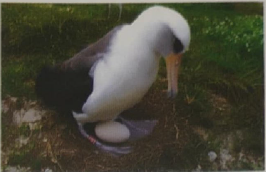
- A Laysan albatross named Wisdom, the world’s oldest known wild bird, has once again amazed scientists by laying an egg at the age of 74.
- Located in the Midway Atoll National Wildlife Refuge in Hawaii, Wisdom has raised over 40 chicks throughout her lifetime.
- This atoll is home to 70% of the global Laysan albatross population. Wisdom continues to symbolize hope for seabird species that rely on healthy ocean ecosystems.
First-Ever Study of a Saber-Toothed Kitten

- A remarkably well-preserved 37,000-year-old sabre-toothed kitten mummy has been discovered in the Upper Pleistocene permafrost near the Badyarikha River in Yakutia, Russia.
- Unlike modern lion cubs, this extinct kitten had dark fur, an elongated muzzle, a massive neck, and an unusually large mouth.
- Tomographic analysis of its skull confirmed its classification within the Homotherium
- This discovery, published in Scientific Reports, offers a rare glimpse into the life of ancient big cats.
Two Cicada Broods Emerge Together for the First Time in 221 Years
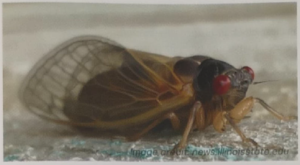
- In 2024, for the first time since 1803, two massive cicada broods—Brood XIII and Brood XIX—emerged simultaneously in the United States.
- These broods, which spend 17 and 13 years underground as larvae, surfaced together when soil temperatures reached 64°F.
- Once above ground, the cicadas engaged in a short but noisy mating season lasting only a few weeks.
- Their synchronized emergence provided a rare and spectacular natural event.
Revolutionary Approach to Rhino Conservation
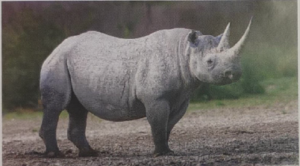
- The Rhisotope Project at Wits University has pioneered a novel method to deter rhino poaching by injecting low doses of radioisotopes into rhino horns.
- This innovative approach, developed over three years, aims to make rhino horns detectable at international border checkpoints using radiation detection monitors at harbors, airports, and land crossings.
- The project, which seeks to create a durable and non-harmful tracking system, may also be extended to protect pangolins, elephants, and other endangered species.
Advancing Research in Healthcare and Medical Sciences
IIT Madras Unveils the Most Detailed 3D High-Resolution Images of the Human Fetal Brain

- The Indian Institute of Technology Madras (IIT Madras) has released the world’s most detailed 3D high-resolution images of the human fetal brain.
- This breakthrough, conducted by the Sudha Gopalakrishnan Brain Centre (SGBC), places India among the global leaders in brain mapping science.
- The dataset, named DHARANI (Developing Human-brain Atlas as a Resource to Advance Neuroscience Internationally), is accessible to researchers worldwide.
- Using state-of-the-art brain mapping technology, 5,132 brain sections were digitally imaged at a cellular level.
- This advancement is expected to significantly contribute to neuroscience research.
- A multidisciplinary team from IIT Madras collaborated with Mediscan Systems, Saveetha Medical College Hospital, and researchers from South Africa, Australia, the United States, Romania, and India.
- The study’s findings have been accepted for publication in The Journal of Comparative Neurology.
Breakthrough in Stem Cell Therapy for Vision Restoration

- Japanese researchers from Osaka University have made significant progress in restoring vision using induced pluripotent stem cells.
- They successfully treated a condition known as limbal stem cell deficiency, which affects the cornea and leads to severe visual impairment.
- Patients in the study experienced noticeable improvement in their eyesight, with some even regaining the ability to see.
- However, the recovery was short-lived, indicating the need for further research.
- The findings were published in The Lancet and provide new hope for individuals suffering from blindness caused by corneal damage.
First-Ever Genetically Edited Pig Kidney Transplant in a Living Person

- In a groundbreaking medical achievement, a 62-year-old man with end-stage kidney disease (ESKD) has successfully received a genetically modified pig kidney transplant.
- The surgery, performed at Massachusetts General Hospital (MGH), lasted four hours and marks a major milestone in organ transplantation.
- This pioneering procedure aims to address the global organ shortage crisis by making animal-to-human transplants a viable option.
- The success of this surgery could pave the way for future advancements in xenotransplantation, offering hope to millions awaiting organ transplants worldwide.
Delving into the Fascinating World of Matter and Energy
The World’s First Nuclear Clock: A Leap in Precision
- Scientists from JILA/NIST and TU Wien in Vienna have introduced the world’s first nuclear clock, marking a significant advancement in timekeeping technology.
- While atomic clocks have been in use for decades, this breakthrough achieves even greater precision by utilizing thorium atomic nuclei.

- Led by Professor Thorsten Schumm at TU Wien, researchers successfully altered the state of an atomic nucleus using a laser for the first time, a technique that allows for high-precision measurements.
- By coupling a high-precision optical atomic clock with a high-energy laser system, they demonstrated the practical implementation of the thorium transition.
- This development sets a new standard for accuracy in time measurement. The findings were published in Nature.
Breakthrough in Laser-Cooled Positronium at CERN

- In a groundbreaking experiment, the Antihydrogen Experiment: Gravity, Interferometry, Spectroscopy (AEgIS) collaboration at CERN has successfully laser-cooled positronium, reducing its temperature by more than half.
- Positronium consists of an electron and its antimatter counterpart, the positron.
- By using a specially designed laser, researchers have enhanced the ability to create antihydrogen and improve the precision of antimatter studies.
- This milestone in antimatter research could lead to deeper insights into the fundamental nature of the universe.
- The collaboration involves physicists from various European and Indian institutions, and the findings were published in Physical Review Letters.
Discovery of the First Unconventional Superconductor Found in Nature
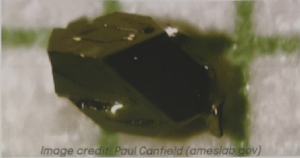
- Researchers at Ames National Laboratory have identified the first unconventional superconductor that exists naturally as a mineral.
- Known as miassite, this rare mineral exhibits superconducting properties when synthesized in a laboratory.
- Miassite is one of only four known naturally occurring superconducting minerals, but what makes it unique is its similarity to high-temperature superconductors.
- This discovery deepens our understanding of superconductivity and could pave the way for more affordable and sustainable superconducting technologies in the future.
- The study was published in Communications Materials.
Technological Advancements Reshaping the World
Breakthrough in Quantum Cryptography
- Indian scientists have achieved a major advancement in cybersecurity by developing a novel method for generating truly unpredictable random numbers, enhancing encryption in quantum communications.
- This breakthrough could revolutionize the way sensitive information is protected.
- The key aspect of quantum security is inherent randomness, such as the randomness in measurement bases selected by both the sender and recipient, which prevents malicious actors from decrypting secure information.
- Scientists at the Quantum Information and Computing (QuIC) lab at Raman Research Institute, Bengaluru, demonstrated a violation of Leggett-Garg Inequalities (LGI), a critical test for “quantumness,” in a loophole-free photonic experiment. The findings were published in Physical Review Letters.
Revolutionary Brain Manipulation Technology
- Researchers at the Institute for Basic Science’s (IBS) Center for Nanomedicine and Yonsei University in South Korea have developed a groundbreaking technology that uses magnetic fields to control specific brain regions.
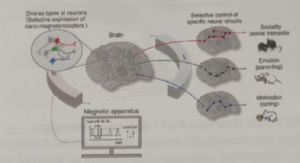
- This new technique, called Nano-MIND (Magnetogenetic Interface for NeuroDynamics), allows for precise, wireless, and remote modulation of deep brain neural circuits.
- The technology holds immense potential for understanding advanced brain functions such as motivation, emotion, and cognition.
- In experiments, activating specific neurons in non-maternal female mice significantly increased nurturing behaviors, similar to those of maternal mice.
- This advancement could lead to new therapeutic approaches in neuroscience. The research was published in Nature Nanotechnology.
DNA-Based Computing and Data Storage
- Scientists from North Carolina State University and Johns Hopkins University have demonstrated that DNA can be used for both computing and data storage, performing tasks such as storing, retrieving, computing, erasing, and rewriting data.
- This innovation, known as the “primordial DNA store and compute engine,” represents a significant leap beyond traditional electronics.

- The technology was tested successfully by solving basic sudoku puzzles, proving its computational potential.
- Additionally, a separate breakthrough in data storage was achieved with memory crystals capable of storing 90 terabytes in a compact format.
- These crystals can retain data for billions of years, even at high temperatures, setting a world record for the most durable storage material.
ARTICLE 5:
COP29 Stepped Forward Yet Much More Needed
COP29: A Landmark Climate Summit in Baku, Azerbaijan
- The 29th Conference of the Parties (COP29) to the United Nations Framework Convention on Climate Change (UNFCCC) was held from November 11 to 22, 2024, in Baku, Azerbaijan.
- As the second-largest COP after COP28 in Dubai, COP29 extended 35 hours beyond its scheduled closure, culminating on November 24, 2024, with nearly 200 countries agreeing to significantly increase climate finance.
- The conference saw landmark decisions in climate finance, carbon markets, adaptation strategies, and the operationalization of the Loss and Damage Fund.
Historic Increase in Climate Finance
- One of the most defining outcomes of COP29 was the decision to increase annual climate finance for developing nations from the previous target of $100 billion to $300 billion by 2035.
- The agreement also aimed to mobilize $1.3 trillion per year from both public and private sources to assist developing nations in mitigation and adaptation efforts.
- Despite these advancements, India and other Global South nations, including Nigeria, pushed for an even higher target—$1.3 trillion annually, with $600 billion as grant-based finance.
- Meanwhile, Small Island Developing States (SIDS), which face imminent threats from sea level rise and ocean acidification, expressed concerns that current allocations are insufficient to support their climate resilience and debt burdens.
Challenges in Credibility and Commitment
- Despite the finance breakthrough, credibility in climate commitments remained a key challenge at COP29.
- A significant walkout by the Least Developed Countries (LDCs) and the Alliance of Small Island States (AOSIS) occurred due to disagreements over financial commitments, particularly regarding the previously proposed $250 billion per year by 2030.
- During the opening ceremony, COP29 President Mukhtar Babayev urged nations to adopt a fair and ambitious New Collective Quantified Goal (NCQG) on climate finance.
- However, the latest UN Environment Programme’s (UNEP) Emissions Gap Report raised serious concerns that current Nationally Determined Contributions (NDCs) are insufficient to prevent global temperatures from rising above the 5°C threshold.
- To stay within safe limits, emissions must decrease by at least 28% to meet the 2°C goal and by 42% for the 1.5°C goal.
- Looking ahead, countries must submit their third round of NDCs (3.0 NDCs) by 2025, ahead of COP30, with more ambitious targets for emission reductions, adaptation strategies, and climate finance contributions.
Key Agreements and Breakthroughs
1. Loss and Damage Fund Operationalization
- A major milestone at COP29 was the full operationalization of the Loss and Damage Fund, which was initially agreed upon at COP27.
- This fund aims to provide financial aid to vulnerable nations, particularly small island states, African nations, and least-developed countries, to help them recover from climate-related disasters.
2. Carbon Market Rules Finalized
- Countries also reached an agreement on new rules for international carbon trading under Article 6 of the Paris Agreement.
- This mechanism allows nations to trade carbon credits, thereby reducing global emissions at a faster rate.
- The decision is expected to lower the costs of emission reductions while promoting international cooperation in climate action.
3. Strengthening Mitigation Efforts
- COP29 focused extensively on strengthening climate mitigation strategies, particularly under Articles 4 and 6.4 of the Paris Agreement.
- Discussions emphasized developing registries to ensure environmental integrity and transparency in carbon credit transactions.
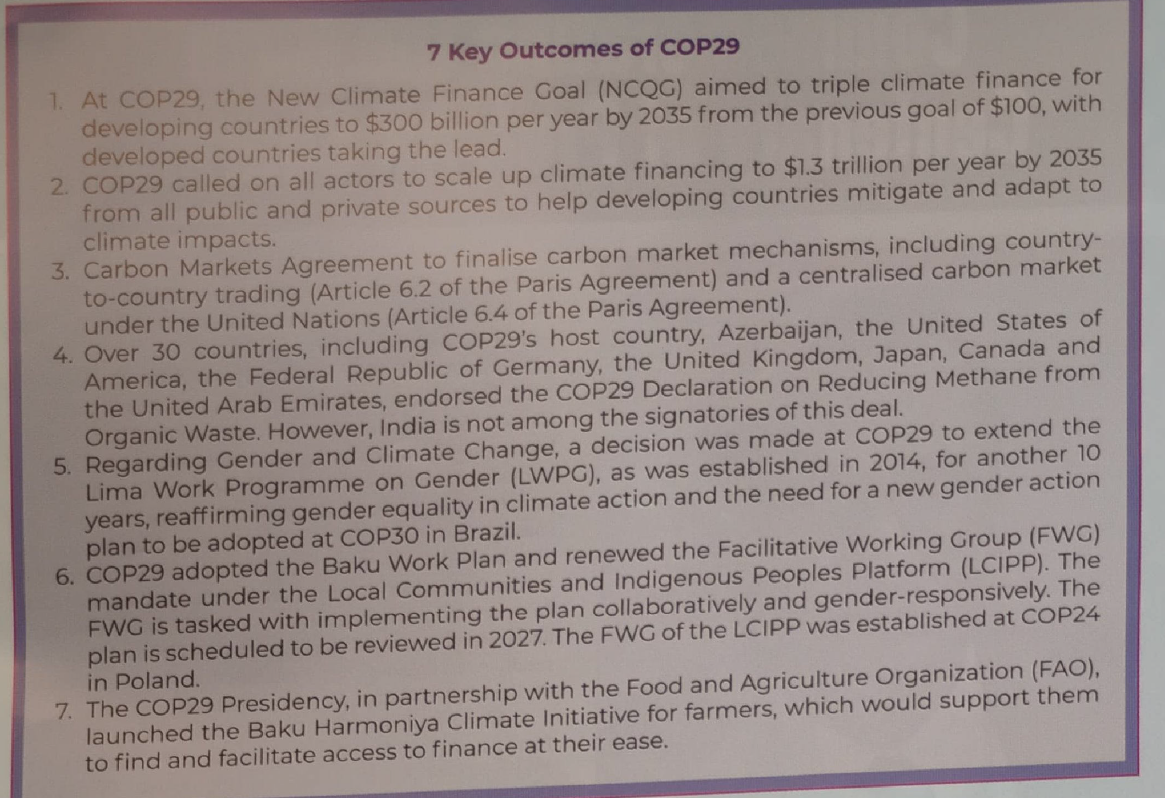
Noteworthy Climate Commitments
1. Global Methane Reduction Initiative
- On a thematic day focusing on food, water, and agriculture, over 30 countries pledged to cut methane emissions from organic waste.
- This effort aligns with the Global Methane Pledge (GMP) of 2021, which seeks to reduce methane emissions by 30% by 2030.
2. Water Resilience Declaration
- The Water Declaration was also introduced at COP29, emphasizing integrated approaches to managing water resources amid climate change.
- It called for international cooperation and policy integration to mitigate climate-related water crises.
3. Transparency and Accountability in Climate Reporting
- Several nations, including Germany, the Netherlands, Japan, and the European Union, set precedents in transparent climate reporting by submitting their first Biennial Transparency Reports (BTRs).
- All UNFCCC parties are required to submit their BTRs by the end of 2024.
4. Gender and Youth Inclusion in Climate Action
- A significant achievement at COP29 was the extension of the Lima Work Programme on Gender for another 10 years.
- Additionally, for the first time, dedicated spaces were created for youth-led climate action, ensuring meaningful participation of children and young activists in the decision-making process.
Global Climate Action & Future Pathways
- The Global Climate Action Summit at COP29 provided a vital platform for governments, businesses, and civil society to collaborate and showcase their tangible climate solutions.
- In his closing remarks, UN Climate Change Executive Secretary Simon Stiell called the new finance goal “an insurance policy for humanity,” urging nations to mobilize even more resources.
- However, he acknowledged that COP29 fell short of the expectations of some countries, and significant work remains ahead.
- UN Secretary-General Antonio Guterres echoed similar sentiments, stressing the need for more ambitious climate action, especially as the world approaches COP30 in 2025.
Looking Ahead to COP30
As the world gears up for COP30, to be held in Belém, Brazil, in 2025, expectations remain high for:
- More ambitious NDCs that strengthen emissions reduction targets.
- Additional commitments for climate adaptation and resilience.
- Further operationalization of carbon markets and the Loss and Damage Fund.
- Enhanced global cooperation on finance, technology transfer, and just transition initiatives.
With the climate crisis escalating, the road to COP30 will be crucial in determining the effectiveness of global efforts to combat climate change. The world will watch closely to see if nations can translate promises into tangible action and keep global warming within safe limits.
ARTICLE 6:
Purity in Peril: Impact of Food Adulteration on Public Health
The Rising Threat of Food Adulteration
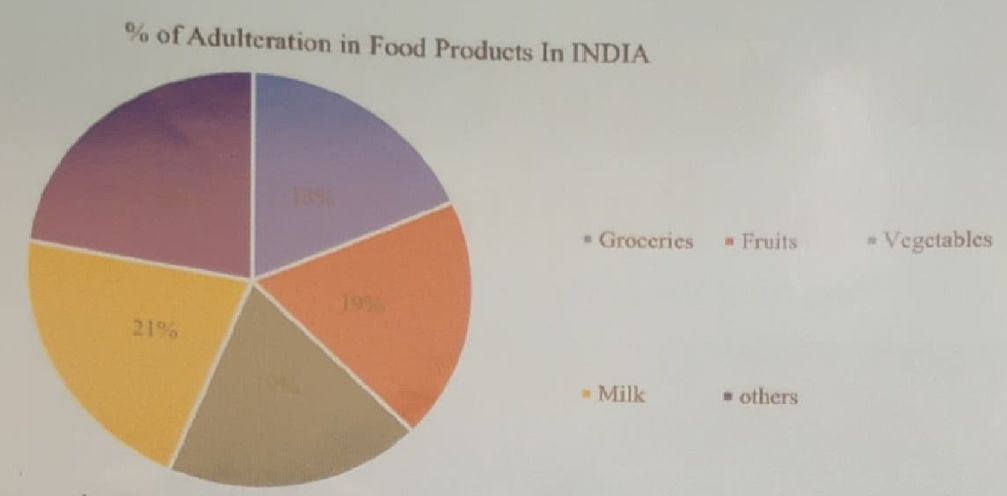
- Food is the most basic necessity for human survival, yet its quality is increasingly being compromised due to food adulteration.
- This issue has emerged as a major public health concern, with harmful ingredients being mixed into food to maximize profits at the cost of consumer safety.
- In India, food adulteration is widespread, particularly in rural communities, semi-urban areas, and urban slums, where people unknowingly buy substandard food products at fair retail prices.
- The problem extends from street vendors to large-scale supply chains, underscoring the need for stricter regulations and enforcement to ensure food safety.
Causes of Food Adulteration
- Food adulteration occurs for various reasons, including profit maximization, supply shortages, lack of stringent enforcement, and consumer ignorance.
- Some adulterations are intentional, while others are incidental due to contamination or packaging hazards.
- Manufacturers, both large and small, sometimes resort to unethical practices to cut costs, leading to serious health hazards.
- Reports from the Food Safety and Standards Authority of India (FSSAI) reveal that the number of adulteration cases has doubled in the past eight years, with states like Uttar Pradesh, Jharkhand, and Tamil Nadu recording the highest rates of adulterated food samples.
Health Risks and Economic Consequences
- Adulterated food not only impacts consumer health but also threatens the economy.
- Unsafe food products lead to widespread illnesses, putting pressure on healthcare systems and reducing productivity.
- Common adulterants such as synthetic dyes, pesticides, and harmful preservatives can cause serious health complications, including digestive issues, weakened immunity, and chronic diseases.
- In the long run, the consumption of such contaminated food can lead to severe conditions like cancer, neurological disorders, kidney failure, and cardiovascular diseases.
Nutritional Deficiency and Digestive Disorders
- Food adulteration directly contributes to nutritional deficiencies by diluting essential nutrients.
- For example, the addition of water to milk reduces its calcium and protein content, affecting bone health and growth in children.
- Similarly, ghee is often replaced with cheaper vegetable fats, depriving consumers of necessary fatty acids and vitamins.
- Adulterants like chalk powder, soapstone, and starch, commonly found in spices and flour, cause digestive problems such as stomach cramps, diarrhea, and vomiting.
Long-Term Health Risks and Toxicity
- The long-term consumption of adulterated food is linked to life-threatening diseases.
- Artificial colors and preservatives in food products have been associated with hyperactivity in children and increased risks of cancer.
- Adulterants like formalin, used as a preservative in fish, have been classified as carcinogenic.
- Studies have also shown alarming levels of lead in turmeric samples from India and Pakistan, with some samples exceeding safe limits by over 200 times.
- Lead exposure in children can result in severe neurological impairments, kidney failure, and developmental issues.
- Additionally, excessive artificial sweeteners in confectionery items can cause organ damage over time.
The Need for Stricter Regulations and Consumer Awareness

- Food adulteration can only be tackled through a combination of strict regulatory enforcement, technological innovations, and consumer vigilance.
- Countries like the United States and Russia have implemented stringent food safety laws, conducting regular inspections and imposing heavy penalties on violators.
- India needs to adopt similar measures, ensuring transparency and accountability in the food supply chain.
- Consumers must also remain vigilant, purchasing food from trusted sources and checking for quality certifications.
- Supporting local farmers who follow ethical farming practices can also help combat the menace of food adulteration.
A Collective Responsibility
- Food adulteration is a pressing issue that requires action from all stakeholders, including policymakers, manufacturers, and consumers.
- By fostering a culture of food safety, enforcing stricter regulations, and educating the public about potential health hazards, we can protect public health and preserve the integrity of our food system.
- As Dr. Sudha Murthy rightly pointed out, understanding what we eat is essential for our well-being. It is time to prioritize food safety and ensure that health truly remains wealth.
ARTICLE 7:
Strange Hunting Behaviour in Birds
The Need for Food in the Animal Kingdom
- All animals need food for energy and survival. Herbivores rely on plants, while carnivores hunt other animals.
- Some species even consume rock salts or excreta in extreme cases.
- Birds, too, require food to survive, and while many rely on traditional hunting methods, some species have evolved unique and fascinating strategies to catch their prey.
Aberrant Hunters in the Avian World
- While many birds hunt through direct pursuit, some species have developed exceptional hunting techniques that defy traditional methods.
- These unusual adaptations showcase nature’s brilliance in enabling survival.
Honey Buzzard – The Insectivore Raptor

- The honey buzzard is a medium-sized raptor known for raiding bee and wasp nests.
- Despite its name, it primarily feeds on insects rather than honey.
- To protect itself from stings, the bird has developed thick, armor-like scales on its legs and specialized feathers.
- Its curved bill allows it to capture and consume insects efficiently.
Cape Gannet – The Avian Missile

- Cape Gannets are large seabirds known for their remarkable diving ability.
- They plunge from great heights, reaching speeds of 145 km/h to catch fish such as sardines and mackerel.
- Their streamlined bodies and strong wings enable them to pursue prey underwater.
- However, due to habitat destruction and overfishing, they are now listed as a vulnerable species.
African Black Heron – The Canopy Hunter
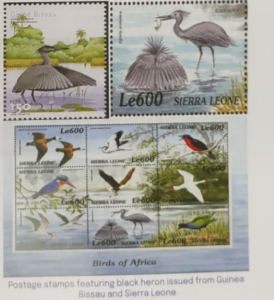
- The African Black Heron, also known as the Black Egret, has a unique hunting technique called “Canopy Hunting.”
- It spreads its wings like an umbrella to create shade, attracting fish underneath.
- While the exact reason for this behavior remains debated, it likely helps the bird see its prey more clearly and lures fish seeking shelter.
Shrikes – The Serial Killers of the Avian World
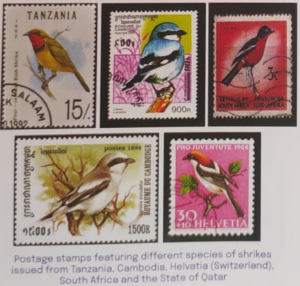
- Shrikes are medium-sized passerine birds with hooked beaks, reflecting their carnivorous nature.
- They catch insects and small vertebrates and impale them on thorns or branches to store their food.
- Their hunting style resembles that of raptors, as they silently wait on perches before striking their prey.
- This habit has earned them the nickname “Butcher Birds.”
Puffins – The Parrots of the Sea
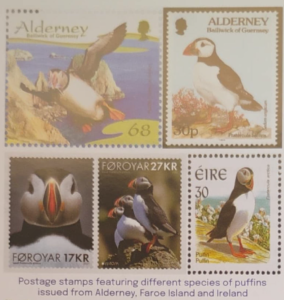
- Puffins are pelagic seabirds that dive into the ocean to catch fish.
- Unlike other seabirds, they can hold multiple fish in their beaks due to a special hinging mechanism.
- Their bright, parrot-like beaks give them the nickname “Clowns of the Sea.” Puffins are found in North America and Europe.
Indian Skimmer – The Scissor Bird
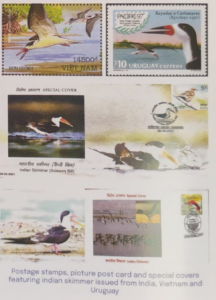
- The Indian Skimmer is a tern-like bird with a distinctive beak where the lower mandible is longer than the upper.
- It skims the water’s surface while flying, catching fish with precision.
- Found in rivers and estuaries of South Asia, these birds face threats due to habitat degradation and pollution, making them an endangered species.
Pelicans – Masters of Cooperative Hunting
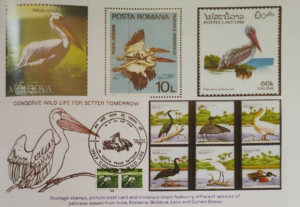
- Pelicans have long beaks with large throat pouches, which they use to scoop fish.
- They often hunt in groups, using their wings to drive fish into shallow waters before capturing them.
- Their beaks are the largest among birds, and air sacs beneath their skin cushion them when diving.
- They also rotate their bodies mid-dive to protect their throat and trachea.
The Role of Birds in Nature and Conservation Efforts
- Birds have fascinated humans for centuries due to their intelligence, beauty, and adaptations.
- However, habitat destruction, hunting, and poaching threaten many species.
- As birds play a crucial role in maintaining ecological balance, conservation efforts worldwide aim to protect them.
- Strict measures and awareness campaigns are vital to preserving these remarkable creatures for future generations.
ARTICLE 8:
Unveiling the Truth: Debunking Common Animal Misconceptions






ARTICLE 9
Handfish: Giving underwater high fives to one of the quirkiest fishes

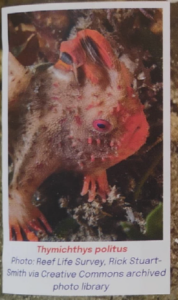
A Unique Marine Species
- Deep in the ocean, a mysterious creature known as the handfish captivates scientists and marine enthusiasts alike.
- Belonging to the family Brachionichthyidae, handfish are small, bottom-dwelling fish found primarily in the waters of southern Australia and Tasmania.
- Their peculiar name comes from their modified pectoral fins, which resemble hands and allow them to “walk” along the ocean floor instead of swimming.
Physical Characteristics and Adaptations
- Handfish vary in size, ranging from a few centimetres to around 15 centimetres in length.
- They exhibit a wide range of colours and patterns, from muted browns and greens to striking oranges and yellows.
- Some species have intricate markings that help them blend into their surroundings.
- Unlike most fish, handfish are relatively sedentary, preferring to stay still on the ocean floor rather than constantly moving.
- Their specialized fins help them grip onto rocks and navigate the seabed with ease.
Hunting and Survival Strategies
- Handfish are skilled ambush predators, relying on their ability to camouflage with the rocky and algae-covered ocean floor.
- Their spotted and patchy appearance helps them remain hidden from both predators and prey.
- Instead of actively chasing food, they wait patiently for unsuspecting small crustaceans, worms, and other invertebrates to come close before striking with precision.
Threats to Handfish Survival
- Despite their remarkable adaptations, handfish face significant threats to their survival.
- Habitat loss, overfishing, pollution, and climate change have all contributed to their declining numbers.
- Several species of handfish are now listed as endangered, highlighting the urgent need for conservation efforts to protect these unique creatures.
Conservation Efforts and Future Protection
- In recent years, conservation groups have intensified efforts to safeguard handfish populations.
- Initiatives include establishing marine protected areas, running public awareness campaigns, restoring habitats, and conducting scientific research to better understand handfish behaviour and biology.
- Additionally, breeding programs have been introduced to increase population numbers and ensure the survival of these fascinating creatures for future generations.
A Reminder of Marine Biodiversity
- The handfish serves as a remarkable example of the ocean’s diverse and unique life forms.
- Its distinctive appearance and rare method of movement remind us of the importance of protecting marine ecosystems and the countless species that depend on them.
- By preserving habitats and supporting conservation efforts, we can help ensure that these extraordinary creatures continue to thrive in the wild.
NEWS IN BRIEF
1) MobilePoser — A New System to Capture Full-body Motion

- Researchers from Northwestern University have developed MobilePoser, a new system that makes full-body motion capture easier and more affordable.
- Unlike traditional methods that require specialized rooms, cameras, or multiple sensors, MobilePoser utilizes sensors already embedded in consumer devices such as smartphones, smartwatches, and wireless earbuds.
- By combining sensor data, machine learning, and physics, the app can accurately track a person’s full-body movements and spatial positioning in real time.
- Potential applications include immersive gaming, health tracking, and indoor navigation.
- The researchers presented MobilePoser at the 2024 ACM Symposium on User Interface Software and Technology in Pittsburgh.
2) Smart Agriculture Sensor to Monitor Plants
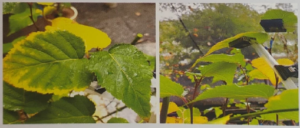
- With climate change and overpopulation threatening agricultural productivity, researchers at Tohoku University have developed a leaf-mounted sensor to easily detect whether a plant is thriving or dying.
- This small, waterproof device attaches to the underside of leaves and uses spectroscopic sensors and light sources to measure leaf color without blocking sunlight.
- It transmits data over Wi-Fi and can function outdoors for over a month. The technology could revolutionize smart farming, forest health studies, and plant monitoring, providing crucial support where needed.
- The research was published in Sensing and Bio-Sensing Research.
3) Researchers develop recyclable and fully ocean-degradable plastic

- Researchers led by Takuzo Aida have developed a durable yet biodegradable plastic that does not contribute to microplastic pollution.
- Unlike conventional plastics, it breaks down naturally, preventing harmful microplastics from accumulating in ecosystems and entering the food chain.
- The study was published in Science.


